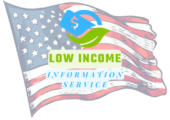Free Low Income Internet
In today’s digital age, access to the internet has become crucial for individuals to stay connected, informed, and empowered. However, for low-income households, affording an internet connection can be a significant challenge. That’s where free low-income internet programs come in, aiming to bridge the digital divide and provide equal opportunities for all. In this blog post, we will explore the benefits of free low-income internet, the eligibility criteria to qualify for these programs, the process of applying, and the profound impact it has on society. Let’s dive in and discover how accessing the internet can transform lives and communities.
Benefits Of Free Low Income Internet
Free low income internet is a service that provides internet access to individuals and families who may otherwise be unable to afford it. This program aims to bridge the digital divide and ensure that everyone has equal access to the internet, regardless of their financial situation. There are several benefits that come with free low income internet, which we will explore in this blog post.
First and foremost, free low income internet enables individuals to stay connected in the digital age. The internet has become an essential tool for everyday life, from shopping and banking to education and job searching. With free internet access, low-income individuals can access crucial resources and information that can improve their quality of life. They can connect with family and friends, access educational materials, and search for employment opportunities, all without worrying about the cost of internet service.
Secondly, free low income internet can help bridge the educational gap. In today’s world, many schools rely on online platforms and resources for teaching and learning. However, not all students have access to the internet at home, which puts them at a disadvantage. By providing free internet access to low-income families, this program ensures that students have the same opportunities as their peers. They can complete assignments, research topics, and access educational resources from the comfort of their own homes.
Eligibility Criteria For Free Low Income Internet
Access to the internet has become essential in today’s digital age, providing us with a wealth of information, communication, and opportunities. However, for low-income individuals and families, this necessity can be an added financial burden. To bridge this digital divide, various initiatives and programs offer free low-income internet services. However, not everyone is eligible for these services. In this blog post, we will explore the eligibility criteria for free low-income internet and how you can determine if you qualify.
Before discussing the eligibility criteria, let’s first understand what exactly free low-income internet entails. This service aims to provide affordable or even free internet access to individuals and families who have limited financial resources. It ensures that even those with lower incomes can stay connected, access educational resources, find job opportunities, and connect with loved ones.
Now, let’s dive into the eligibility criteria for free low-income internet. While the specifics may vary depending on the program or provider, there are general guidelines that most initiatives follow. Typically, these eligibility criteria consider factors such as:
- Income Level: To qualify for free low-income internet, individuals or families must meet specific income requirements. These requirements may be based on the federal poverty level or a percentage of it, ensuring that those with limited financial means can benefit from the program.
- Participation in Assistance Programs: Many free low-income internet initiatives require applicants to be participating in certain assistance programs such as Medicaid, Supplemental Nutrition Assistance Program (SNAP), National School Lunch Program (NSLP), Federal Public Housing Assistance, or the Low-Income Home Energy Assistance Program (LIHEAP). This requirement helps target those who most need affordable internet access.
- Geographic Location: Some programs may have geographic limitations, focusing on specific regions or communities. This could be due to the availability of resources or the program’s funding constraints.
In addition to these general eligibility criteria, it’s essential to consider the specific requirements of each program or initiative separately. Some initiatives might have additional eligibility factors, while others may require applicants to meet specific age or household size requirements.
Once you are aware of the eligibility criteria, it is easy to determine if you qualify for free low-income internet. Start by researching the available initiatives or programs in your area. Check their websites or reach out to the providers directly for detailed eligibility guidelines. Most programs have an online application process where you can submit your information and determine your eligibility.
Free low-income internet initiatives play a vital role in bridging the digital divide and promoting digital inclusion. By understanding the eligibility criteria, you can explore the options available to you and ensure that you or your loved ones have access to this essential resource. The internet has the power to transform lives, and it should be accessible to all, regardless of income.
How To Apply For Free Low Income Internet
Access to the internet has become essential in today’s modern world. It provides people with countless opportunities for education, communication, and access to vital information. Unfortunately, not everyone can afford internet services, which can be a significant barrier in this digital age. However, there are options available for individuals with low income to access the internet for free. In this blog post, we will explore how to apply for free low-income internet and provide information on the eligibility criteria.
To apply for free low-income internet, you need to meet specific eligibility criteria set by various programs and organizations. These criteria typically consider factors such as your income level, participation in public assistance programs, and location. The most common program offering free low-income internet is the Federal Communications Commission’s (FCC) Lifeline program. This program aims to make communication services more affordable for low-income individuals and families.
To be eligible for the Lifeline program, you should be enrolled in a qualifying government assistance program, such as Medicaid, Supplemental Nutrition Assistance Program (SNAP), Federal Public Housing Assistance, or the National School Lunch Program’s Free Lunch Program. Additionally, your income should be at or below 135% of the federal poverty guidelines or have a household member participating in one of the above programs.
Once you have determined your eligibility, the next step is to apply for the free low-income internet program. Each program may have slightly different application procedures, but generally, you can apply online or through a designated phone number. The Lifeline program, for example, allows individuals to apply online on their official website or submit a paper application through mail.
| Documents Required for Application | Application Process |
|---|---|
|
|
Obtaining free low-income internet can significantly improve the lives of individuals and families who otherwise may not have access to vital online resources. It enhances educational opportunities, facilitates job searches and applications, promotes digital skills development, and enables better communication with friends and family. By alleviating the financial burden of internet services, these programs help bridge the digital divide and ensure that everyone has equal opportunities for growth and success in our increasingly connected world.
Impact Of Free Low Income Internet On Society
The impact of free low income internet on society is immense. In today’s digital age, access to the internet is an essential tool for individuals to connect, learn, and access information. However, many low-income individuals struggle to afford internet services, which limits their opportunities and hinders their ability to thrive in various aspects of life.
One of the major benefits of free low income internet is that it bridges the digital divide. The internet has become an integral part of our lives, and it is essential for everyone to have equal access to it. By providing free internet services to low-income individuals, we can reduce the disparities and give everyone an equal chance to harness the power of the internet.
Moreover, free low income internet has a significant impact on education. Access to the internet allows students from low-income backgrounds to access a vast amount of educational resources and materials. This enables them to supplement their learning outside the classroom and explore various topics of interest. It also helps in narrowing the educational achievement gap between students from different socioeconomic backgrounds.
| Benefits | Eligibility Criteria | How to Apply |
|---|---|---|
|
|
|
In conclusion, the impact of free low income internet on society is significant. It promotes equality, enhances educational opportunities, and contributes to economic growth. By ensuring that all individuals have access to the internet, we can create a more inclusive and connected society. It is crucial for governments, organizations, and communities to recognize the importance of free low income internet and work towards providing it to those in need.
Frequently Asked Questions
What are the benefits of free low income internet?
Free low income internet provides affordable access to the internet for individuals and families with limited financial resources. It enables them to stay connected, access online education, find employment opportunities, access healthcare services, and engage in e-commerce, among other benefits.
What are the eligibility criteria for free low income internet?
The eligibility criteria for free low income internet vary depending on the program or service provider. Generally, individuals or families must meet certain income requirements or participate in government assistance programs such as Medicaid, SNAP, or Supplemental Security Income (SSI). Additionally, some programs may require applicants to be new customers or have no outstanding debt with the service provider.
How can I apply for free low income internet?
To apply for free low income internet, you can start by researching available programs in your area. Visit the websites or contact the service providers offering such programs to learn about their eligibility requirements and application process. Generally, you will need to submit proof of income or participation in government assistance programs along with a completed application form.
What is the impact of free low income internet on society?
Free low income internet has a significant positive impact on society. It reduces the digital divide by providing equal access to information and resources, regardless of an individual’s financial situation. It enhances educational opportunities, bridges the employment gap, and promotes social inclusion. Additionally, it helps individuals access vital services, improves communication, and strengthens community engagement.
Can I use free low income internet for online education?
Yes, free low income internet can be used for online education. It enables students from low-income families to access online learning platforms, educational resources, and remote classes. This helps bridge the educational gap and ensures equal opportunities for students to succeed academically.
Are there any limitations to free low income internet plans?
Yes, free low income internet plans may come with certain limitations. These can include data caps or slower internet speeds compared to regular plans. However, the specific limitations may vary depending on the program or service provider. It is important to review the terms and conditions of the program to understand any potential limitations.
How can free low income internet help individuals in finding employment?
Free low income internet plays a crucial role in the job search process. It provides individuals with access to online job portals, career development resources, and remote work opportunities. By having internet access at an affordable cost, individuals from low-income backgrounds can apply for jobs, submit resumes, and communicate with potential employers, increasing their chances of finding employment.



